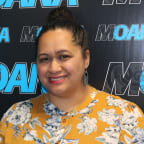Taa moko artist Julie Paama Pengelly talks about the challenges she's faced in a male-dominated industry and why she doesn't believe in Kirituhi - the practice of non-traditional taa moko.
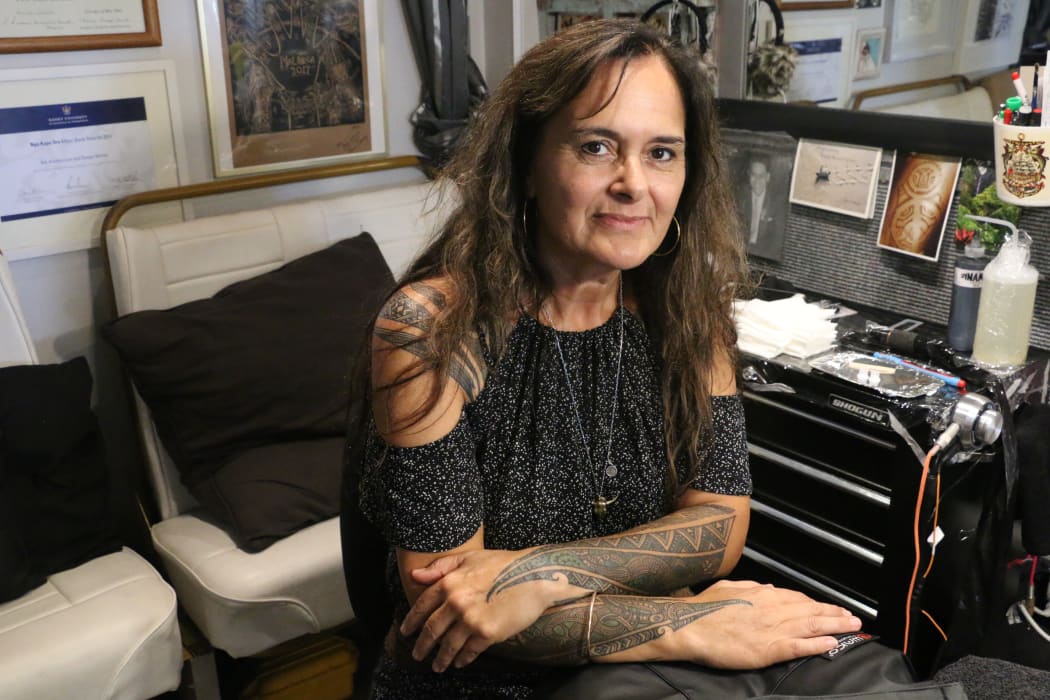
Julie Paama Pengelly started out in Taa Moko in the early 1990's. Photo: RNZ/Justine Murray
Julie owns the Art and Body tattoo studio in downtown Mt Maunganui.
With a view of Mauao at her doorstep, it’s close to the beach and apartment blocks.
The studio interior is furnished like a bus, with the word 'SCHOOL' displayed over the reception.
Julie says the decision to open Art and Body was made on a whim, to take advantage of the growing tourist numbers and also to create a space of conversation.
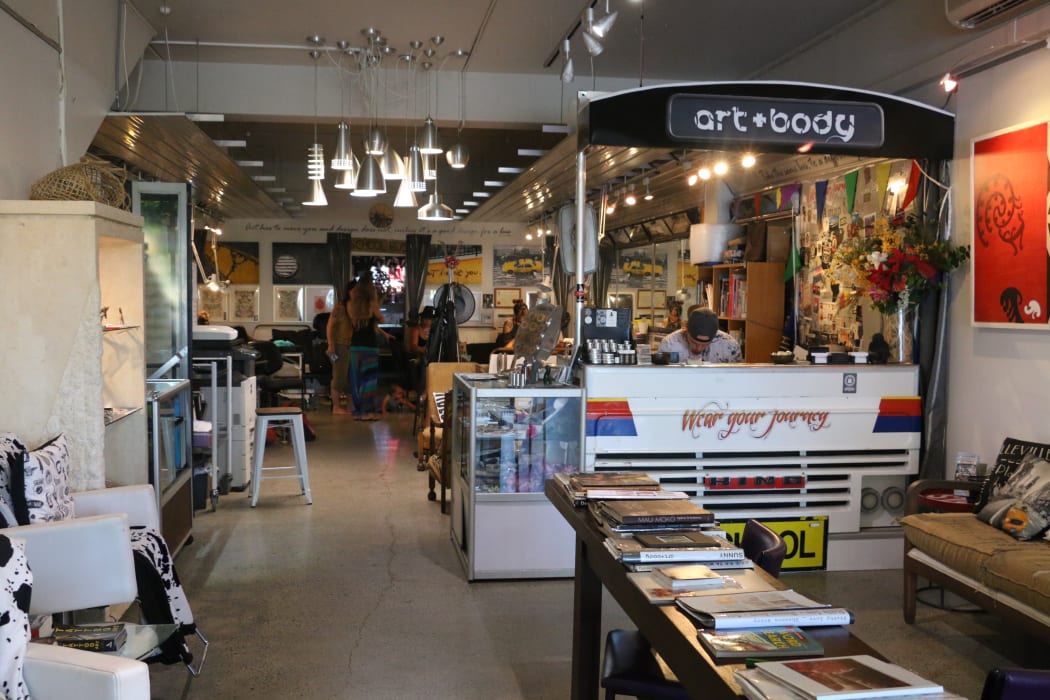
Julie opened her studio Art and Body in 2012. Photo: RNZ/Justine Murray
“It wouldn’t have worked for me to create this massive Polynesian space in Mount Maunganui, no-one would have rented me a shop for a start... Māori have to create ways of talking to each other, if we are in our own environment going ‘Tino Rangatiratanga!’ we’re not developing a discussion to defend ourselves or to talk to the ‘other’ or for them to build a bridge to us, so in my painting practice… I want to talk to the discussion between Māori and Pākeha.”
Julie's decision to set up a tattoo studio was a move towards creating greater cultural acceptance, she says.
“Māori aren’t well represented here and there is quite a lot of elderly people with old views. I wanted to convert them, so the two-million-dollar-woman getting her nails done would see some Māori stuff happening.”
In the early 1990s, there was a groundswell of support for taa moko formed part of a Māori cultural revival.
Julie Paama-Pengelly dedicated herself to learning the art form as part of her academic research at the time.
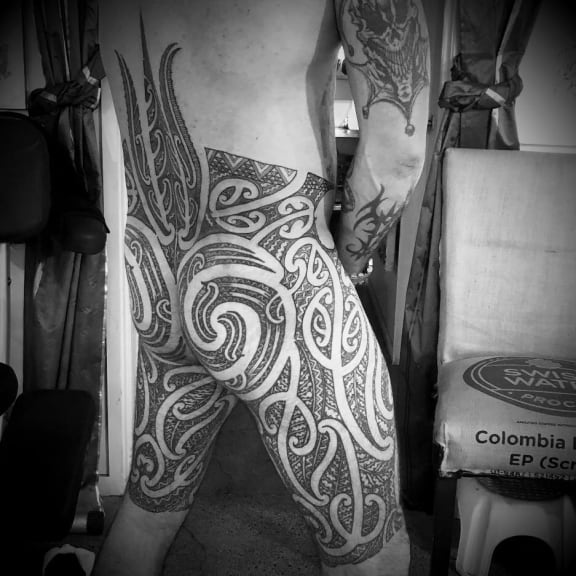
Pūhoro by Julie Paama Pengelly Photo: Supplied - Julie Paama Pengelly
“I saw Derek [Lardell] doing Piri Sciascia’s puhoro and of course those first experiences has a huge impact.”
An image of Professor Piri Sciascia showing his puhoro (on his back thighs and buttocks) featured on the front cover of the second issue of the now defunct Mana Magazine.
Julie has a Master’s Degree in Third World Development and a Masters in Māori Visual Art (Painting) from Massey University. While studying there, she met Professor Robert Jahnke who would shape her career in arts.
“Robert Jahnke started a Māori Art degree and I was a graduate assistant on that programme, it’s an awesome degree, but it struggles in Palmerston North. I’m really proud of all the graduates I see in that programme.”
In the early days, Julie attended teachers training college and did moko four days a week.
"Back then we had to make our own needles, we needed an autoclave to sterilise our needles, you couldn’t buy plastics and disposables and that was the tradition of tattoo. Quite early on Toi Māori saw the groundswell of support and formed the committee, Te Uhi.”
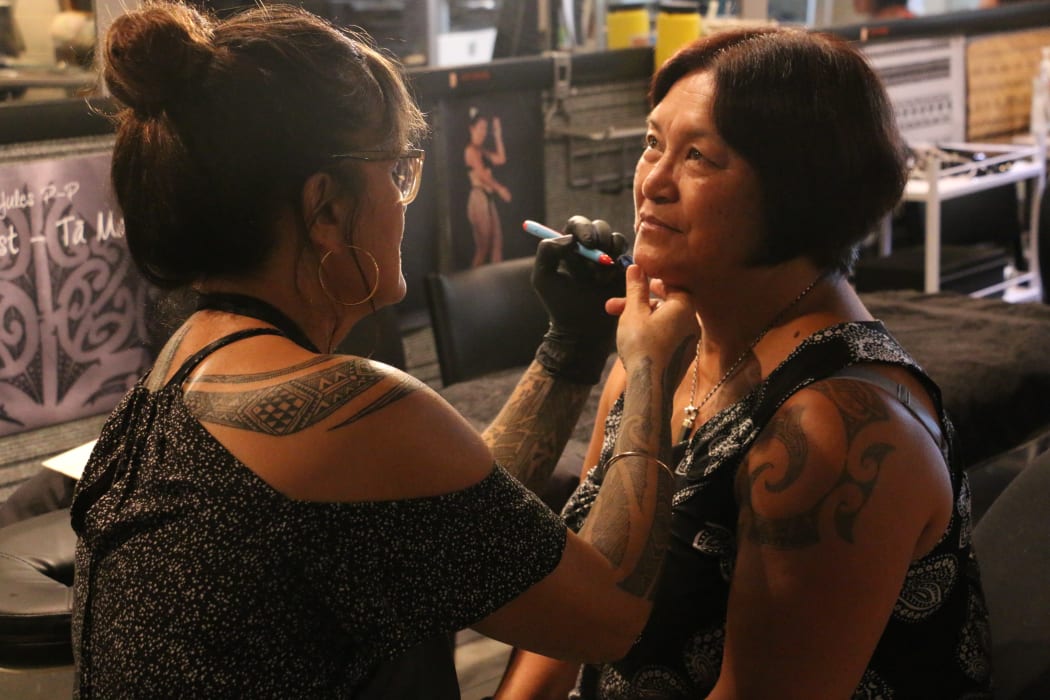
Photo: RNZ/Justine Murray
For 20 years, Julie taught Fine Art and Design at tertiary level.
She moved back to Tauranga – the tribal area of her father who died when she was three – to take up a job at Te Whare Wānanga o Awanuiārangi.
Julie has held a number of arts residencies over the years and has exhibited around the world and in 2010 her book Māori Art and Design, Weaving, Painting, Carving and Architecture was published.
“Everyone’s got this misconception that you have to have the reo but I’m like, well, back then you had to be 15 and the reo was a given…but what it really is, is fear of how people are going to see them” - Julie Paama on taa moko.
On average, Julie sees between 6 - 10 clients a year who want their moko kauae or pūhoro done.
This morning, Raglan-based Rongoā Māori practitioner Ngaronoa Renata has chosen to get a moko kauae (traditional female chin tattoo).
“I became very focused on that thought, it became embedded in my whatumanwa…and realised that we’ve been carrying this matriarchal lineage on my mother’s side through my great great grandmother…so I spoke directly with my cousin Kura Te Wara Reweri and we embarked on a conversation” Ngaronoa says.
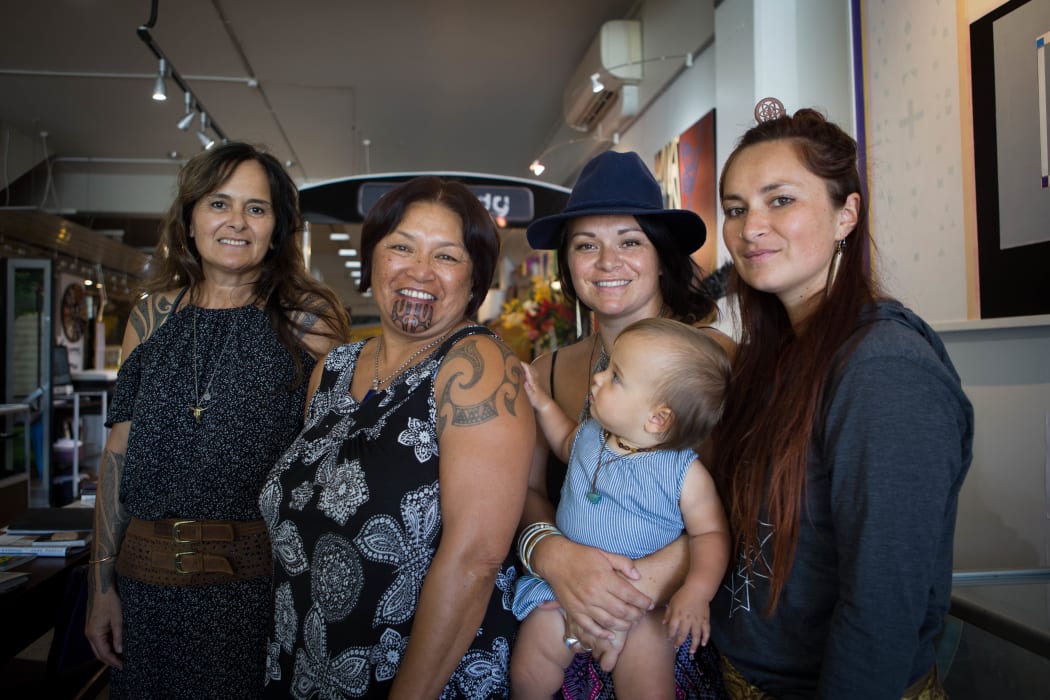
Julie's whanau Photo: Annamein
Julie is passionate about pūhoro as a form of taa moko and when quizzed about it reveals she's made up her mind to undergo some work herself soon.
“That’s my next one and I’m not going to divulge that. I’ve got an artist in mind but she doesn’t know yet… Note that I said she?" (Laughs)
